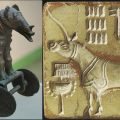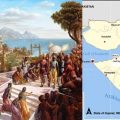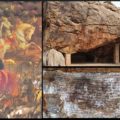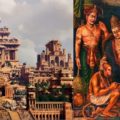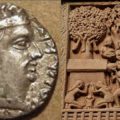A Chronology of Comet Observations During Rigvedic Era
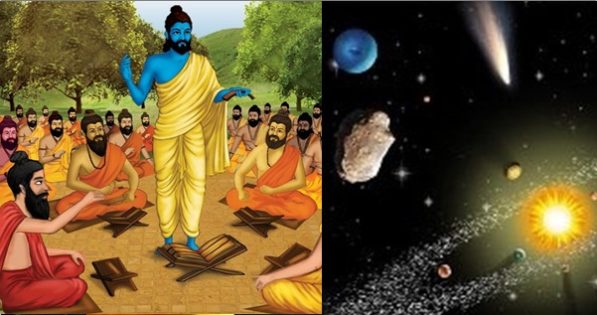
Varahamihira mentions certain comet observations of Rigvedic era in Ketuchara, Chapter 11 of Brihat Samhita. Parashara, Asita and Devala were the earliest astronomers who recorded the comet observations. Later, Garga compiled these observations. Varahamihira refers to the observational data of comets compiled by Garga. Parashara Tantra also gives similar information about comets including the years elapsed between two comet observations. We can roughly fix the chronology of these observations of comets.
Vasaaketu (11907 BCE): Vasaaketu was observed 130 years after the year of floods (when Kushsthali was submerged by sea) and it rose in the west. Probably, the year of floods was 12037 BCE.
Asthiketu (11777 BCE): Asthiketu was observed 130 years after the observation of Vasaaketu.
Shastraketu (11647 BCE): Shastraketu was observed 130 years after the observation of Asthiketu.
Kumudaketu (11646 BCE): This comet was observed within a year after the observation of Shastraketu.
Kapaalaketu (11521 BCE): This comet was observed 125 years after the observation of Kumudaketu.
Maniketu (11520 BCE): This comet was observed within a year after the observation of Kapaalaketu and 300 years and 9 months before the observation of Kaliketu. Comet Hailey was observed at Jyeshtha, Mula and Anuradha nakshatras.
Kaliketu (11218 BCE): This comet was observed in the year of Daksha’s Yajna. Parasharatantra mentions that Kaliketu, born out of Rudra’s anger during the sacrifice of Daksha, rises after 300 years and 9 months. Vriddhagarga states that Kaliketu rises from the east stationed in the region of Jyeshtha, Mula and Anuradha nakshatras. This observation of Kaliketu regularly corresponds to Hailey’s Comet in Aug-Sep 10218 BCE.
Chalaketu (11103 BCE): This comet was observed 115 years after the observation of Kaliketu. Parasharatantra mentions that Chalaketu moves close to Brahma Nakshatra (Abhijit), touches Dhruva, Brahmarashi, Saptarshis and returns half the sky to set in the south.
Jalaketu (11102 BCE): This comet appeared nine months after the observation of Chalaketu. It rose in the west. Comet 2P/Enchke was observed in the year 11102 BCE.
Eight Comets Urmiketu, Shitaketu etc. (between 11102 BCE and 10982 BCE): The comets Urmiketu and others ending with Shitaketu appear at intervals of 13, 14 and 18 years.
Bhavaketu (10982 BCE): This comet was observed roughly 120 years after the observation of Jalaketu.
Uddalaki Shvetaketu (10872 BCE): This comet was observed 110 years after the observation of Bhavaketu.
Padmaketu (10862 BCE): This comet was observed 10 years after the observation of Uddalaka Shvetaketu.
Svadhiketu (10747 BCE): This comet was observed 115 years after the observation of Padmaketu.
Aavartaketu (10746 BCE): This comet was observed within a year after the observation of Svadhiketu.
Rashmiketu (10646 BCE): This comet was observed 100 years after the observation of Aavartaketu.
Samvartaka-ketu (10538 BCE or 9638 BCE): This comet was observed 108 years after the observation of Rashmiketu. Utpala says that this comet was observed 1008 years after the observation of Rashmiketu.
Out of these observations, I could establish the dates of Kaliketu, Maniketu and Jalaketu based on the chronology and astronomical evidence. There is serious need of further research in this area. Amazingly, Vedic Rishis meticulously observed comets and recorded the data and attempted to analyze the data.
Ref:
Chronology of India: From Manu to Mahabharata by Vedveer Arya.
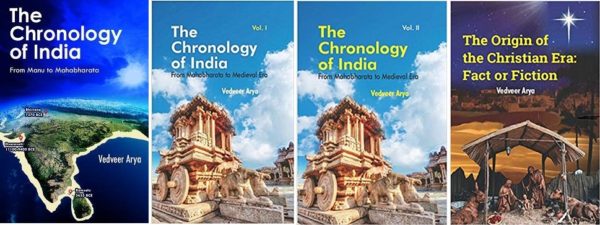
Books by Vedveer Arya
Click Here to buy the four Volumes of books on Indian Chronology by Vedveer Arya: The Chronology of India: From Manu to Mahabharata, The Chronology of India: From Mahabharata to Medieval Era – Vol I, The Chronology of India: From Mahabharata to Medieval Era – Vol II, and The Origin of the Christian Era: Fact or Fiction.
Featured image courtesy: IndiaDivine and Pinterest.
Vedveer Arya
Latest posts by Vedveer Arya (see all)
- How Salaries Were Paid to Temple Staff in Early Medieval Bharat - July 27, 2024
- A Genealogical Account of Bhrigu Gotra from Saptarshis - July 27, 2024
- Saptarshis: Lineages of Angirasa gotra from 14050 BCE - July 27, 2024

